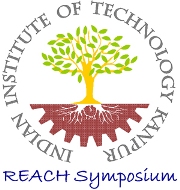

Biomimetics: Designs Inspired by Living Systems
Coordinators: Animangsu Ghatak (CHE), Ashutosh Sharma (CHE)
Nothing can be found in nature that is not a part of science
—Leonardo da Vinci, Trattato della PitturaIn nature, species have evolved for million of years during which they have learnt how to find food, how to fend oneself from predators and how to propagate the species, in a word, how to solve the problems of survival. These solutions arrived at by many cycles of natural selection are versatile and complex yet sophisticated and well organized. They say “a tiny insect is more complex than a star”. In fact, every living plant and animal is a time-tested design solution to which we can look to for sustainable, efficient, benign and eco-friendly solutions to complex, multi-faceted and often interconnected network of problems that we encounter today. There is not a single field of science and technology where we do not get inspired by nature and her intricate biological principles. The strength of spider silk, hydrophobic effect of the lotus leaf, the optical effect of butterfly scales, the dry adhesion of gecko, the maneuverability of a swimming boxfish and flying insects, the anti-fouling corrugated skin of shark, in the sub-cellular length-scale the motor proteins and so on and so forth, all these inspire us to understand and mimic these biological designs. At times it becomes difficult to decide where to begin as nature presents us with unprecedented complexity, organization and adaptability at every length-scale. The interplay of physical, chemical and engineering principles make progress difficult without an interdisciplinary and holistic approach.
It is in this spirit that we have a session on Biomimetics in IITK Reach Symposium 2008. However, it is almost impossible to cover the vast area of bio-mimicking within one session, nor have we attempted to do that. Instead we have talks focused on few key research areas which in essence are representative of problems that arise in the molecular to micro to macroscopic length scales.
While “cells” are the basic building blocks of all biological structures, our journey begins from the sub-cellular entities: the proteins and peptides which co-ordinate almost all molecular functions. For example, protein and peptide molecules aggregate via variety of intermolecular interactions to form higher order structures. Learning from these natural processes it is possible to synthesis suitable peptides which can be made to self assemble to structures which can be beneficial to us, e.g. warding off a disease. We have one talk titled “Biomimetic models of protein aggregation” by Professor Sandeep Verma on this fundamental topic.
One important class of proteins within the biological cell is the motor proteins which perform variety of activities e.g. some of the motor proteins transport cargo to their respective destinations whereas some mobile workshops synthesize macromolecules. Some other machines are designed to function as packers of DNA whereas some machines shred nucleic acids and proteins into pieces for their eventual degradation. The research in this area has led to the bottom-up approach of manufacturing artificial molecular machines and use of the components of the natural machines in artificial structures. We have one talk titled “Molecular machines: packers and movers, assemblers and shredders” by Professor Debashish Chowdhury on this fascinating and exciting area of research.Fluidics is important for all biological operations and fluids are carried by tiny microfluidic vessels and network of tubes that span every nook and corner of the body. In the biological context, fluid flow does much more than this. In fact studies show that during the embryonic morphogenesis, the shear field induced by the fluid motion triggers gene expression which in turn gives rise to the particular shape and size of an organ. Needless to say that bio-microfluidics as a subject is at its infancy and will have significant impact in applications related to health care, fuel cell, drug discovery, artioficial limbs and so on and so forth. We have one talk titled “ Bioinspired design of microfluidic systems ” by Professor Shantanu Bhattacharya on this emerging area of research.
Besides fluidics, “materials” is another subject that has been immensely enriched by learning directly from Nature. We have two talks which will elucidate this aspect: one will focus on design of bio-inspired adhesives and another will describe the design of scaffolds for tissue engineering. The titles of these talks are “ Bioinspired design of patterned adhesives ” by Mr. Abhijit Majumder and “Synthesis of artificial tissue: A nanofiber-based biomimetic approach” by Mr. Rajesh Vasita.While the above topics deal with the end products or the fruits of evolution, we can enrich ourselves from the knowledge of the process of evolution itself. “Genetic Algorithm” is an optimization tool that has been developed by mimicking the principles of evolution and is being increasingly used to obtain the near-optimum solutions to notoriously difficult and previously un-tractable optimization problems. In this regard we have one talk titled “Optimum designs through principles of evolution” by Professor Partha Chakraborty in which we will hear the story of this journey from “evolution” to “optimum design.”
The topics and speakers identified for the symposium under the theme are:
- Bioinspired design or microfluidic systems (Shantanu Bhattacharya, ME)
- Molecular machines: packers and movers, assemblers and shredders by (Debashish Chowdhury, PHY)
- Biomimetic models of protein aggregation (Sandeep Verma, CHM)
- Optimum designs through principles of evolution (Partha Chakraborty, CE)
- Bioinpired design of patterned adhesives (Abhijit Majumder, CHE; student)
- Biomimetic approach for synthesis of artificial tissue (Rajesh Vasita, BSBE; student)
- TBA (Pete Vukusic, University of Exeter, UK)